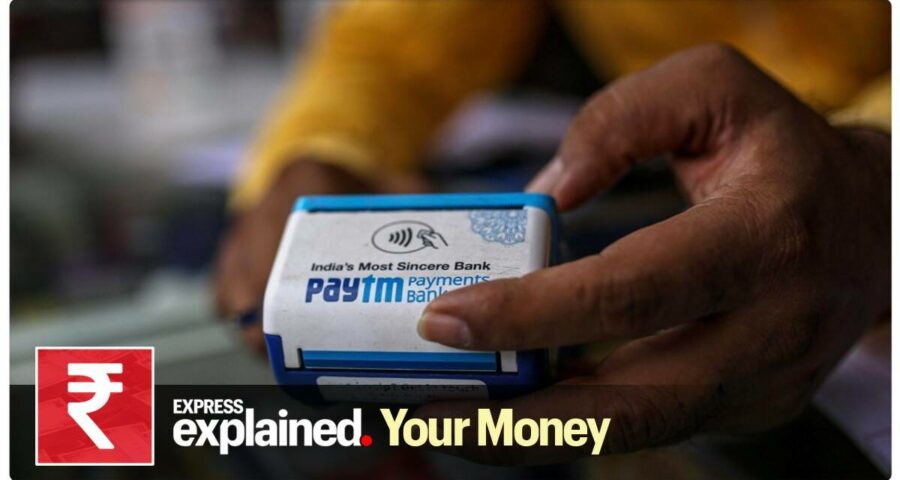Paytm IPO: Paytm is currently India’s leading digital ecosystem for consumers and merchants, with over 337 million registered consumers and over 21.8 million registered merchants as of June 30.
One97 Communications, which operates Paytm, is set to come out with the country’s largest Initial Public Offer on November 8, valuing the company at $19.3–19.9 billion. Paytm is currently India’s leading digital ecosystem for consumers and merchants, with over 337 million registered consumers and over 21.8 million registered merchants as of June 30, according to a report by Redseer management consulting company.
What is the size of the issue?
The Rs-18,300-crore IPO of One97 Communications will be available for subscription between November 8 and 10. The company has fixed the price band for the IPO at Rs 2,080-2,150 per share, with a lot size of six shares. In the Paytm issue, 75 per cent will be reserved for Qualified Institutional Buyers (QIBs), 15 per cent for non-institutional investors (NIIs) and the remaining 10 per cent for retail investors.
The company has increased its IPO size by Rs 1,700 crore from the earlier Rs 16,600 crore, with the rise coming entirely from the sale of more stake by existing shareholders.
How much will existing investors get?
The IPO comprises issuance of fresh equity shares worth Rs 8,300 crore and Offer for Sale (OFS) by existing shareholders to the tune of Rs 10,000 crore. Antfin Netherlands holding BV is set to receive up to Rs 4,704.30 crore in the IPO; Softbank’s SVF Panther (Cayman) Ltd and SAIF III Mauritius Company Ltd, Rs 1,689 and Rs1,327.60 crore respectively; and Paytm founder Vijay Shekhar Sharma, up to Rs 402.70 crore.
What will the offer be used for?
In the Draft Red Herring Prospectus (DRHP), One97 has said the company intends to use the funds raised to strengthen the Paytm ecosystem by acquiring and retaining consumers and merchants. The company noted that it has acquired consumers and merchants through marketing, cashback and promotions, and also offers merchants access to technology through its consumer and business app, payment platforms and payment instruments.
The company also intends to use the funds to invest in new business initiatives, acquisitions and strategic partnerships. Paytm recently acquired digital lending platform Urja Money Pvt Ltd, which provides a loan management system through its proprietary solution — CreditMate.
What are the risks investors should look out for?
Paytm has consistently posted losses due to its high marketing and promotion expenses. “We expect to continue to incur net losses for the foreseeable future,” the company said in its DRHP, noting that it was going to continue to seek to increase its market share by bringing more consumers and merchants to its platform. Paytm earns revenue through transaction fees charged to merchants based on the percentage of GMV. It also charges customers convenience fees for certain transactions, including booking tickets for travel and entertainment.
The key to long-term profitability for Paytm is continuous growth in Gross Merchandise Value (GMV) of transactions on Paytm, addition of new merchants, and the retention of existing merchants on the platform. The company’s GMV has increased from Rs 2.29 lakh crore in FY’19 to Rs 3.03 lakh crore in FY20, and to Rs 4,03 lakh crore in FY 2021.
Another key risk for Paytm could be an increase in the payment processing charges to financial institutions and card networks, particularly if the company is not able to pass on these higher costs to customers or merchants. The company has, however, been able to actually reduce the payment processing cost as a percentage of Gross Merchandise Value (GMV) transacted on its platform from 1 per cent in FY19 to 0.5 per cent in FY21. This has been primarily driven by improvements in transaction rates from banks due to its scale, improved transaction routing due to technology and product interventions, and an increase in the share of low-cost payment instruments.
An inability to retain merchants on the platform due to transfer of merchant accounts to competitors, or merchants seeking to renegotiate transaction fees at the time of contract renewal, could also put downward pressure on Paytm’s revenues. Merchants could gradually shift to other payment providers if they offer better terms.
What are Paytm’s targets going forward?
“Market share, market share, market share,” said Paytm founder Vijay Shekhar Sharma in response to a question on whether the company would prefer to lower marketing and promotion cost to improve profitability, or go for aggressive business growth, on an analyst call on Thursday. Sharma noted that while the cost of customer and merchant acquisitions and retention for the company were falling, the company was planning on spending more to achieve a customer base of 500 million.
The company is also targeting an increase in contribution profit, the difference between the revenue and variable cost. The company has emphasised efficiency, bringing down marketing and promotion expenses in FY21 by 84.4 per cent compared to FY19, which has helped raise contribution profit to Rs 362.50 crore in FY21 from a loss of Rs 1,998 crore in FY19.
Paytm’s contribution profit continues to show an upward trend in this fiscal at Rs 244.5 crore for Q1. In this quarter, the company’s payments and financial services revenue stood at Rs 689.40 crore, contributing to 77 per cent of its total revenue, with the company incurring a net loss of Rs 376.60 crore.
Newsletter | Click to get the day’s best explainers in your inbox
Source: Read Full Article



